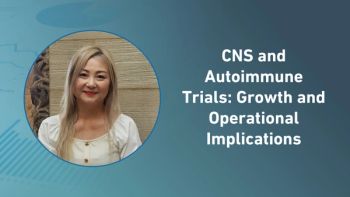
- Applied Clinical Trials-11-01-2018
- Volume 27
- Issue 11
FDA Initiatives Advance Orphan Therapies
FDA initiatives aim to increase biomarkers and early advice to sponsors for more efficient and cost-effective clinical trials for developing targeted therapies, including orphan therapies.
Streamlined clinical trials and continued patient involvement in product research continue to advance the development and market approval of more innovative therapies for rare conditions. FDA has approved more than 60 orphan indications for new and existing products this year, building on 80 approvals for 2017, according to a study from the IQVIA Institute for the National Organization for Rare Disorders (NORD) (see
Important FDA initiatives aim to increase the use of biomarkers and provide early advice to sponsors to make clinical trials more efficient and less costly for developing targeted therapies, including those for rare conditions. An important draft guidance issued in October encourages sponsors to use “minimal residual disease” (MRD) as a biomarker in testing drugs or biologics to treat certain blood cancers (
The agency also finalized a guidance on identifying treatments that address underlying factors that may contribute to disease, such as rare molecular changes present in small subsets of patients (
information on grouping patients with different molecular alterations and on strategies for evaluating the benefits and risks of targeted therapies to treat diseases with rare molecular alterations.
More support
Sponsors, researchers, and patients can obtain advice and information through a new FDA web portal on “developing products for rare diseases,” which aims to provide a “central home” on FDA regulatory initiatives and programs in this area (
A broader agency reorganization plan announced by Gottlieb in July aims to better coordinate advice and oversight for orphan drugs by establishing an Office of Clinical Policy and Programs (OCPP) that supports cross-cutting clinical programs involving multiple FDA medical product centers. Under the new structure, OCPP will report to FDA Deputy Commissioner Rachel Sherman and include the Office of Orphan Products Development (OOPD), the Office of Pediatric Therapeutics, the Office of Combination Products, and a new Office of Clinical Policy. OCPP also will oversee an expanded agency-wide program for patient affairs and healthcare providers to enhance engagement with these external stakeholders.
FDA officials plan to expand OOPD’s staff and programs under Janet Maynard, newly named acting director of the office. And FDA’s new orphan product council is meeting regularly and assisting in the development of additional guidance documents, reported Sherman at the NORD summit.
These initiatives stop short of establishing a separate FDA center of excellence for rare diseases, as sought by patient advocates in this area. But the planned organizational changes will mean that the oversight of new therapies for rare diseases, said Sherman, “will never become orphans” at FDA.
Jill Wechsler is the Washington Correspondent for Applied Clinical Trials
Articles in this issue
about 7 years ago
The Basics of Clinical Trial Centralized Monitoringabout 7 years ago
Risk-Based Monitoring Versus Source Data Verificationabout 7 years ago
Europe Mulls Rival Approaches to Tackling Diseaseabout 7 years ago
Blockchain in Research, from Business to Personalabout 7 years ago
Applied Clinical Trials, November 2018 Issue (PDF)Newsletter
Stay current in clinical research with Applied Clinical Trials, providing expert insights, regulatory updates, and practical strategies for successful clinical trial design and execution.






.png)



.png)



.png)
.png)
